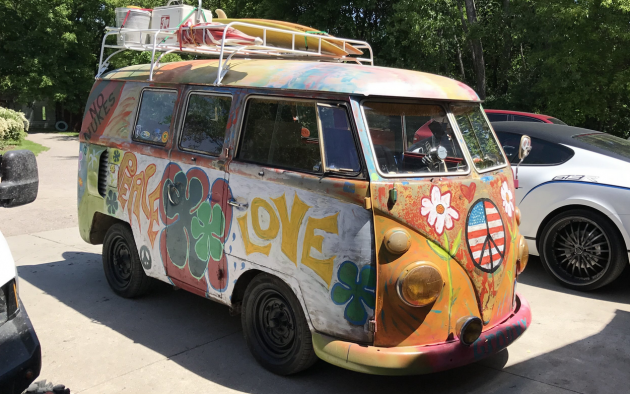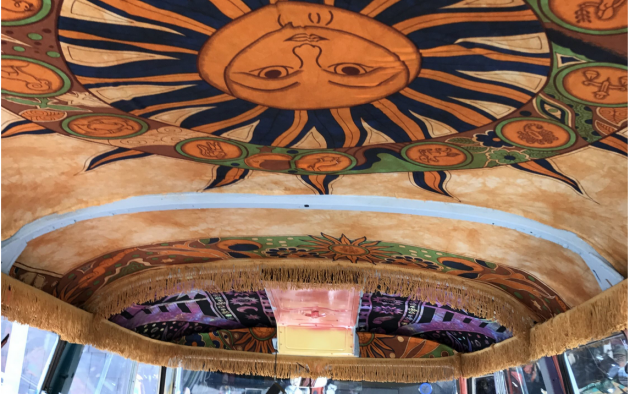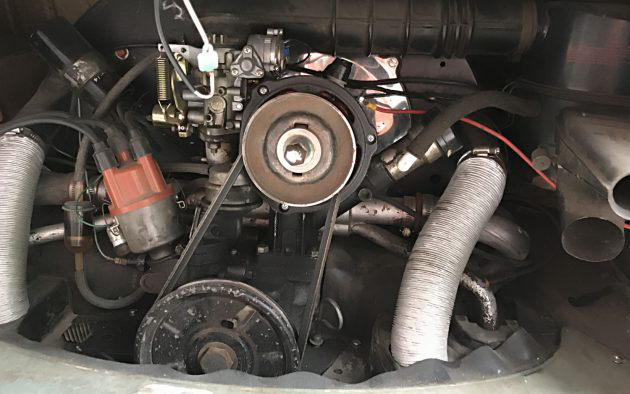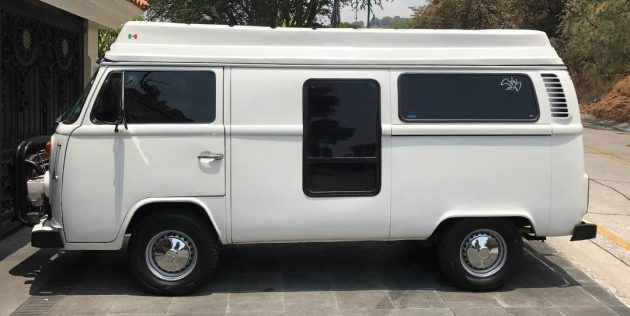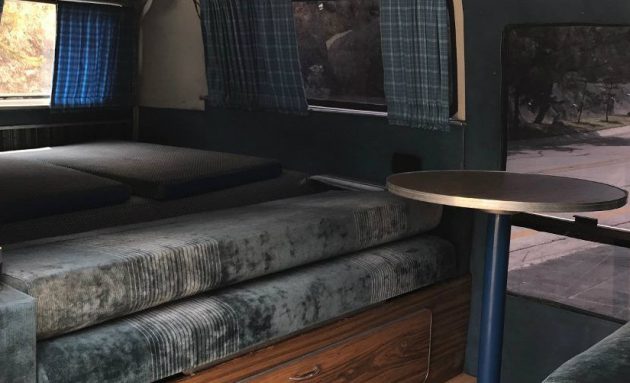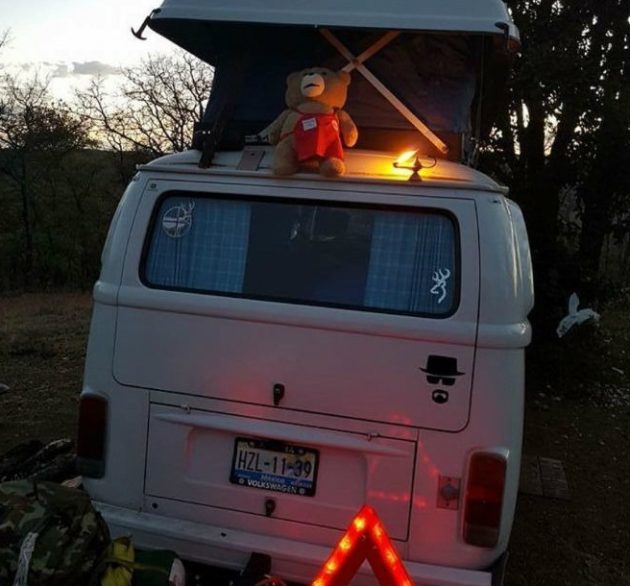
Photo courtesy WDR.de.
Had it not been for an ID plate that had remained with the bus – and a Volkswagen enthusiast with an eye for rare Wolfsburg tin – then a rare 1951 VW Microbus Deluxe left sitting in a German field for more than 50 years might well have become so much scrapyard fodder. Instead, it’s now destined for a 10-year restoration.
According to that ID plate, which current owner Florian Kalff of Bonn, Germany, ran by Volkswagen’s archives before buying the dual pickup loads’ worth of rusted metal, the 23-window Microbus – aka “Samba” – not only dates to 1951, the first year of production, it also dates to one of the first days of production. Reportedly, the Volkswagen archives only list one earlier chassis number for a Samba, which has since gone missing.
Introduced in April 1951 at the Frankfurt Motor Show, the Microbus Deluxe featured windows up and down its length, including at each rear corner, along with windows cut into the sides of the roof and a sunroof that exposed all six rear passengers to the sky. More chrome trim adorned the Samba than any other Microbus (“a magpie’s nest of brightwork,” as author Richard Copping put it in his “VW Bus: Forty Years of Splitties, Bays, and Wedges“), and it featured a full-width dashboard that lesser Microbuses didn’t. Its superior visibility made it a favorite of sightseeing companies, and its deluxe trim bumped the pricetag a good 40 percent.
Kalff’s Samba has a rather murky history. Records show that it went to Fleischhauer – a dealer in Köln – as a demonstrator, and the lack of a TÜV sticker on the license plate suggests it came off the road sometime before 1961. How or why it ended up in a field in the Eifel mountains of Germany remains a mystery. Kalff, a Volkswagen restoration parts dealer, has a theory, however. As he told Bonn’s General-Anzeiger, Sambas built before August 1960 made do with the Beetle’s 24.5-hp engine and thus became obsolete when Volkswagen introduced the 34-hp engine and synchronized transmission in the Microbus; it wasn’t uncommon for owners of the older Sambas to abandon their wagons.
The Samba had laid in the field for so long, the field’s previous owner claimed not to have known of its existence. Only when the new owner of the field began to clear it did the Samba – well, enough of it to identify it as a Samba, anyway – resurface. The new owner happened to know a customer of Kalff’s, and Kalff claims to have bought the Samba’s remains, which included the drivetrain, the aforementioned ID plate, and even one of the plexiglass rear corner windows, for a four-figure sum.
Kalff has since carted the remains to his shop about 30 miles away and started planning the Samba’s restoration, which he said will require at least 10 years and another six figures; a British coachbuilder has been conscripted to replicate the missing parts of the body and incorporate as much of the existing body as possible. The result of the restoration, he told the General-Anzeiger, should document the Samba’s history rather than sparkle and shine.
Progress on the restoration will be posted to Kalff’s website.


